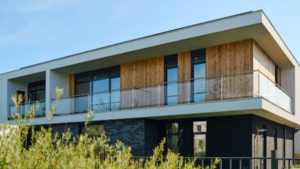A Guide to Choosing The Perfect Grass Seed For Your Lawn

Lawns can be sources of great pride and joy. Having a lush, green carpet of grass that’s the envy of the neighborhood can certainly generate sample personal satisfaction. Of course, lawns can also be the cause of excessive frustration when they seem to turn brown and patchy despite a homeowner’s best efforts to help them thrive.
Creating a Beautiful, Thriving Lawn
Many people swear they can’t keep a cactus alive, much less maintain a beautiful expanse of grass. In many cases, though, the fault lies not with the homeowner but with the type of grass that’s in place. Choosing the right variety of grass can make a world of difference in the appearance of a lawn. With professional grade turf seeds, it may even be possible to maintain a flourishing yard for most of the year.
Finding the Right Type of Grass
Grass comes in numerous varieties. Each one can grow thick and green under the right circumstances. Still, the circumstances that create the perfect environment for growth differ by species. Because of that, not all types of grass are right for all areas or even all homes. Take a look at some common types of grass seeds and the situations they’re recommended for.
Warm-Weather Grass Seeds
Some grasses fare better in warm weather. They crave higher temperatures, and some can withstand moderate droughts. When autumn rolls around, though, the cooler temperatures cause them to fade away until more favorable conditions return the following spring. Bahia, Bermuda, Centipede, and St. Augustine grasses fall into this category. They’re recommended for the southern portions of the United States where warm weather tends to last longer.
Cool-Season Grass Seeds
Other types of grass thrive in cooler temperatures like those in the northern half of the country. If summer temperatures soar too high or moisture becomes sparse, cool-season grasses retreat. That being said, they tolerate the cooler temperatures of early spring and late autumn. Some can even withstand light frosts. Though they won’t last through deep freezes, they can certainly stay green longer despite cooler weather. These grasses include Bluegrass, Fescue, and Sun and Shade.
Transitional Grass Species
In between those two extremes, there’s a transitional zone. It’s a band across the United States that has characteristics of both cool and warm areas as well as traits of its own. It usually has more moderate rainfall and temperatures than its counterparts. This zone includes most of North Carolina, Virginia, West Virginia, Tennessee, Kansas, and Arizona among others. Bermuda, Fescue, and Sun and Shade can flourish in the transitional zone. Experts often recommend mixing different types of grass in this area for the best results.
Other Factors to Consider
Climate is one of the main factors that affects grass growth and determines the best types of seeds to plant. Other aspects come into play as well, though. For one, it’s best to consider how much foot traffic the grass will be exposed to. Bluegrass is one species that holds up well to wear and tear, but Fescue requires gentler treatment. At the same time, the amount of shade versus sunlight a property receives can affect grass growth. Remember, certain types of grass require more attention than others as well.
Developing a Beautiful Lawn
Numerous types of grass seeds are available, and there are different types of grass included in the species mentioned above. Climate is a major deciding factor when choosing the right type of grass for a property, but it’s not the only detail to consider. Think about working with a professional to find the perfect type of grass or mixture of seeds to develop a lush, flourishing lawn.








